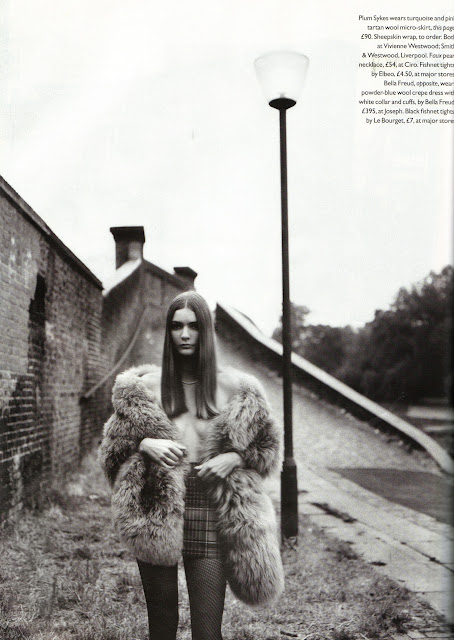(Source: thesun.co.uk) Britney and Justin loved denim - perhaps a little too much.
(Source: goodgoodgirl.com) I really like this way of wearing denim - it shows off the legs in a quirky way
(Source: sodahead.com)
Celebrities were the main style icons of the noughties - television stars such as those on talent shows became the hottest new people to watch.

(Source: blogspot) Cheryl Cole became something of a style icon when she was part of the X Factor judging panel.
Just like in the two first world wars, the War On Terror influenced the fashion industry's top designers and so many military references were filtered down through the industry structure. Balmain was the top brand to pioneer this trend in the noughties, and its influence is still strong today.
(Source: pinterest) Balmain's military references are absolutely stunning

(Source: blogspot)
Given that we were in a new era, people were feeling a sense of nostalgia and looked back on past eras - vintage clothing was increasing in popularity as people bought clothes from bygone eras to create a new, stand-out look. One of the main icons of this was the character Carrie Bradshaw in Sex And The City.
(Source: igetakickoutofyou.wordpress)
Boho chic was still in fashion - the likes of Sienna Miller had put it in the public spotlight and ensured it would stay there for a long time. It eventually progressed into festival fashion in the late noughties, with style icons such as Kate Moss and Alexa Chung holding strong influence over the fashion conscious. Waistcoats, maxi skirts, Hunter wellies, Topshop festival makeup and casual jackets were some of the key items of this trend.

(Source: sparklyfashion.com)
(Source: modaanddestilo.com)
Fashion became extremely ethical in the noughties - there was a huge focus on making sure the manufacturers gave their employees fair wages and care, and so more expensive but quality garments were being made from brands such as People Tree.
(Source: ecouterre.com)
High-street and high-fashion designer collaborations were in abundance in the noughties - designers such as Karl Lagerfeld and Stella McCartney were collaborating with the likes of H&M and Topshop to bring their vision in a watered down version to the wider audience. This tied in well with the consumerism, in which everyone was striving for quick, cheap fashion.
(Source: ltstatic.com)
(Source: stellamccartneyethicalfashionfiles.wordpress)

.jpg)
